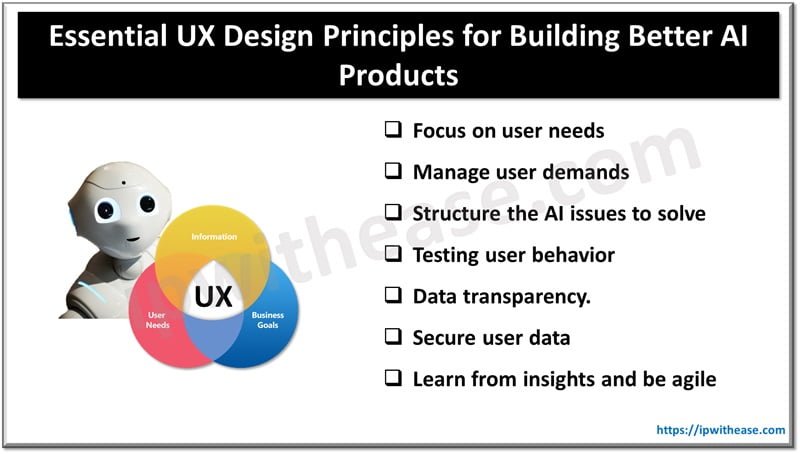Table of Contents
As artificial intelligence is revolutionizing the digital market and technology, it is one trend that has been part of our lives. Experts define AI products as innovative technologies that can introduce a human characteristic into a process. AI products are hardware or software products that deliver functionalities or services and perform automation, such as customer services, etc.
Designers use the power of AI to make people’s lives easier. However, AI-driven products need careful planning. So, designers have created a set of models to configure digital interfaces. Moreover, they follow essential UX design for AI products to produce better solutions. The goal is to provide a robust application that provides a user with an excellent user experience.
Continue reading and discover the essential UX design principles shared by the experts below.

Essential UX Design Principles for Building Better AI Products
Statistics show that in 2024, the market size of AI will be 184 billion US dollars and is predicted to rise to 243 billion US dollars in 2025. With the widespread use of AI, the data shows that AI products have been a significant tool for many industries. But how are these AI-driven products designed? Here are the essential UX design principles provided by the experts.
Focus on user needs
Building a better AI product means defining what users need. Understand what issue could be solved or what experience could be improved to satisfy users. Some of the factors that you need to consider when identifying user’s need:
- Conduct user research to understand their needs.
- Define your scope and goals by establishing your product’s value, how it solves their problem, etc.
- Generate and test various concepts to meet your user’s expectations.
- Collaborate with stakeholders.
- Refine your designs by measuring your product’s performance or identifying any bugs or issues.
Manage user demands
Offering detailed explanations of what your user expects from your app can improve UX. Find the steps to manage user demands:
- Educate users of your tool and what they expect from the app.
- Provide a guide on how to accomplish specific tasks.
- Create intuitive designs that contain informative placeholders and simple inputs.
- Provide an easy-to-follow onboarding procedure.
Structure the AI issues to solve
Lead your data science team by setting KPIs (key performance indicators), defining the relevant data, and determining the number of AI model errors that can affect UX. Start collecting your data as early as possible and design your UX to gather it. Project managers should help the data team define the suitable model by determining the accuracy, precision, and recall per used case.
Testing user behavior
AI apps provide the most user-centric experience possible. But, the testing phase may be challenging. User behavior tests can help assess users’ behavior regarding apps, websites, and products during the development stage and after the product launch. Here are the helpful practices to use when testing the user behavior:
- Examine the functionality of the product
- Find any potential issues and bugs a user may encounter.
- Enhance the quality of the product and the overall UX to ensure that the product addresses the user’s needs.
Data transparency.
Data transparency is vital to guarantee the users’ data is secured. Consider the following elements:
- Inform the user of what data you need
- Ask the user for information processing
- Let the users monitor AI data.
Secure user data
Attention to data transparency is essential, but securing user’s data is crucial. Implementing modern methods such as face recognition, multi-factor authentication, etc, and locking the data is vital. Moreover, it is essential to provide users with the option to manage their data and design an AI product that notify users whenever there’s a system issue.
Learn from insights and be agile.
Agility is making progress in every iteration. Building better AI continues after the product launch. So, learning from user data and analytics is critical to enhancing your AI and model functionality.
The Takeaways
Applying the UX design principles may help you build better AI products. You can succeed in the innovative industry by focusing on user needs, structuring the AI issues to solve them, learning from analytics, and being agile.
Collaborate with the design team to provide the proper UX that addresses user expectations.
ABOUT THE AUTHOR
IPwithease is aimed at sharing knowledge across varied domains like Network, Security, Virtualization, Software, Wireless, etc.



